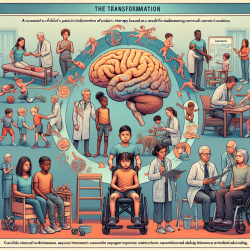Introduction to Gestalt Theory in Speech Therapy
Gestalt theory, originating in the early 20th century, has been a significant framework in understanding perception and cognition. It emphasizes the idea that humans naturally perceive objects as whole rather than as a sum of parts. This theory, while initially applied to visual perception, has profound implications for speech therapy, particularly in how children process and understand language.
Understanding the Core Principles
The core principles of Gestalt theory include proximity, similarity, closure, symmetry, and continuity. These principles suggest that the human brain is wired to see patterns and relationships, which can be leveraged in speech therapy to enhance language acquisition and processing in children.
- Proximity: Elements that are close to each other tend to be perceived as a group. In speech therapy, this can be applied by grouping similar sounds or words to help children recognize patterns.
- Similarity: Similar elements are perceived as part of the same form. This can aid in teaching children to categorize words and sounds based on shared characteristics.
- Closure: The mind completes incomplete shapes or sounds. Therapists can use this principle to help children fill in missing parts of words or sentences, enhancing their understanding and speech production.
- Symmetry: Symmetrical elements are perceived as part of the same group. This can be used to teach balanced sentence structures.
- Continuity: The mind prefers continuous figures. Speech therapists can use this to encourage fluid speech patterns.
Applying Gestalt Theory in Online Speech Therapy
At TinyEYE, we provide online therapy services to schools, and the application of Gestalt principles can significantly enhance our therapeutic approaches. By understanding and applying these principles, therapists can create more engaging and effective therapy sessions. Here are some strategies:
- Interactive Activities: Use digital tools to create interactive activities that group sounds and words based on Gestalt principles, making it easier for children to grasp language concepts.
- Visual Aids: Incorporate visual aids that emphasize patterns and relationships in language, helping children to see the 'whole' picture in communication.
- Pattern Recognition: Develop exercises that encourage children to recognize and predict language patterns, enhancing their cognitive processing and speech fluency.
Encouraging Further Research
While the application of Gestalt theory in speech therapy is promising, further research is essential to fully understand its potential. Practitioners are encouraged to explore how these principles can be integrated into their practice, considering the unique needs of each child. By doing so, they can contribute to a growing body of knowledge that supports data-driven and evidence-based therapeutic interventions.
To read the original research paper, please follow this link: Gestalt theory in 20th-century history.










